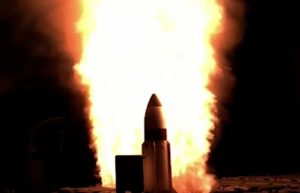By Tom Z. Collina The House Armed Services Committee's (HASC) May 9 vote to build a third strategic missile interceptor site on the East Coast by the end of 2015 is generating a great deal of controversy, and for good reason. A close look at the HASC proposal shows that it is premature at best. House Republicans, such as Rep. Michael Turner (R-Ohio), are using a forthcoming classified report by the National Research Council (NRC) to justify their proposal for an East Coast site. However, Rep. Turner is cherry-picking the NRC's results to support his position. NRC's recommendations make it clear that the current West Coast interceptor system is not effective, and would have to be completely redesigned, retested and rebuilt before it could be installed on the East Coast. HASC's requirement to deploy the third site by late 2015 is thus highly unrealistic. The United States already has two Ground-based Midcourse Defense (GMD) sites on the West Coast, with 30 interceptors deployed in California and Alaska, to handle a potential attack from North Korea. The GMD system has not had a successful intercept test against a cooperative target since 2008, with two failures in 2010. The Obama administration is building another interceptor system in Europe, known as the Phased Adaptive Approach (PAA), to handle potential attacks from Iran. The system's Phase IV, to be deployed in 2020, would seek to intercept long-range missiles that could reach the United States. Neither North Korea nor Iran has yet deployed long-range missiles that could reach the United States. The main conclusions of the NRC report, called Making Sense of Ballistic Missile Defense: An Assessment of Concepts and Systems for U.S. Boost-Phase Missile Defense in Comparison to Other Alternatives, were made public in an April 30, 2012 letter from committee co-chairs L. David Montague and Walter B. Slocombe to the chairman and ranking member of the HASC. The letter states that, "The current GMD system has serious shortcomings, and provides at best a limited, initial defense against a relatively primitive threat. However, it can be fixed." To do so, the NRC suggests a new two-stage Ground-Based Interceptor (GBI) that is smaller and faster (6 km/sec) than the current GBI and a new "more capable" kill vehicle. In other words, their "fix" includes a completely new interceptor system, which will take significant time and money to develop. Only after the new interceptor and kill vehicle are ready, then the NRC says the system could be deployed initially at a third site "in the northeastern part of the U.S.," and thereafter used to replace the GBI system on the West Coast, for a total of 100 deployed interceptors. No timeframe is given. The NRC report states that this plan would make Phase IV of the European PAA redundant, and thus that phase should be cancelled. In addition, the Bush administration's plan (since abandoned by the Obama administration) for a third site in Poland would not have been effective as it would have used a derivative of the GBI, which the committee recommends replacing. In addition, the NRC report found that boost-phase intercept is not feasible, and thus mid-course intercept is the most promising means of intercepting long-range ballistic missiles. Even so, the NRC notes that an effective mid-course system must confront the "discrimination challenge," which means it must be able to tell the difference between real target warheads and decoys. The NRC analysis raises some crucial points that actually undercut arguments for an East Coast site:
- The current West Coast GMD system is not working and needs to be replaced, and a third site should not be built until new technology is developed and tested. Such a process is not likely to be completed by HASC's deadline of late 2015.
- The proposed East Coast site is an alternative to EPAA Phase IV; we do not need both.
- The East Coast system, like all mid-course intercept plans, would be vulnerable to decoys and other countermeasures, for which no answer has been found after decades of trying.
Given the NRC's concerns about the current GMD system, it is not clear why it would recommend a new East Coast system before getting the West Coast system right. In any case, in light of the NRC's findings, the HASC proposal to build a new site by late 2015 seems woefully out of touch with technical reality.

